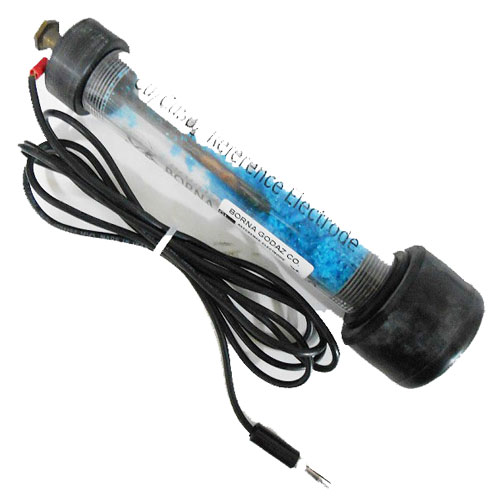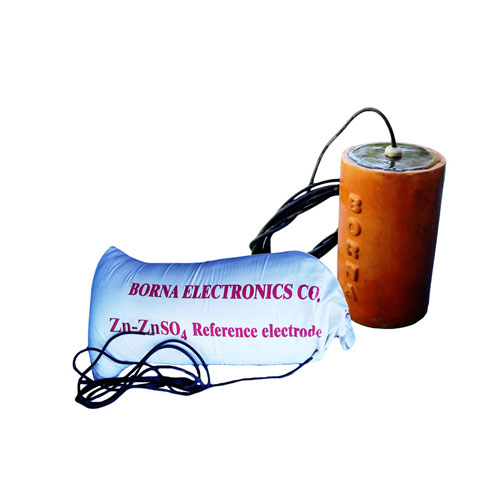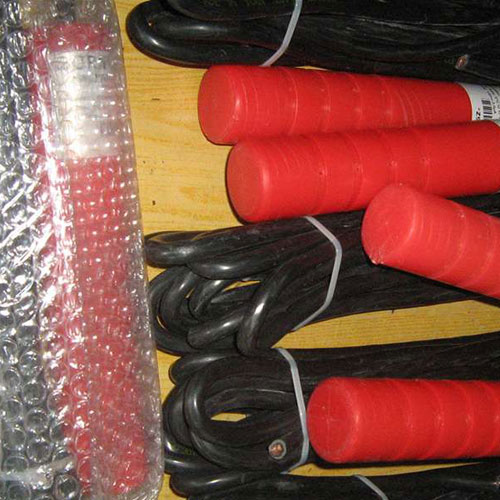Category: reference electrode and cathodic protection accessories
Reference electrode
The potential of underground pipelines and facilities buried in soil or submerged in water is measured with respect to reference electrodes (Hofcells).

Reference Electrodes

The potential of underground pipelines and facilities buried in soil or submerged in water is measured relative to reference electrodes (Hofcells).
Reference Electrodes
The potential of underground pipelines and facilities buried in soil or submerged in water is measured relative to reference electrodes (Hofcells). The reference electrodes used in the oil, gas, petrochemical and marine industries are divided into three main categories:
- Copper/copper sulfate reference electrode (mobile and fixed) for use in soils without chlorine ions
- Zinc/zinc sulfate reference electrode (mobile and fixed) for use in soils containing chlorine ions
- Silver/silver chloride reference electrode (moving and fixed) for use in marine environments
- Zinc reference electrode for use in marine environments
According to the BS 7361 standard, the potential difference of different reference electrodes compared to the hydrogen standard electrode at a temperature of 25 degrees Celsius is as follows:
| Electrode | (V) Potential |
| Copper / copper sulfate | 0.32 + |
| Saturated silver/silver chloride/potassium chloride | 0.20+ |
| Silver/silver chloride/sea water | 0.25 + |
| Calomel (saturated potassium chloride) | 0.25 + |
| on/sea water | 0.78 – |
- Copper/copper sulfate reference electrode
Bernaghadaz copper/copper sulfate reference electrodes are produced in two ways, mobile and fixed. The mobile type with a probe is suitable for many applications, while the fixed type is used on the bottom of tanks and in the vicinity of smart transformer rectifiers, etc.
The dimensions of the reference electrode may be chosen according to the application, but in order to avoid polarization during the tests, the surface area of the copper electrode in contact with the copper sulfate solution must be large enough. The copper electrode must be selected from high purity copper (99.9%) and cleaned and immersed in a saturated copper sulfate solution to remove all traces of oxide and grease. It is necessary to maintain the saturated state of the solution by adding additional solid copper sulfate.
The electrical connection of the movable type reference electrodes with the environment is established only by the porous layer at the end of the electrode, and its humidity is maintained by the penetration of copper sulfate solution.
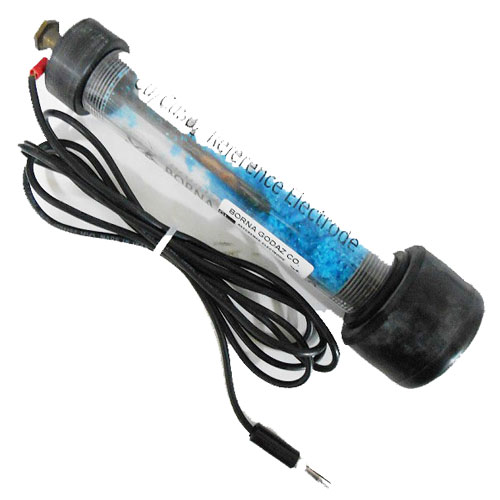
The electrical connection of the reference electrodes of the fixed type with the environment is created by the entire porous clay body and due to the presence of the backing (usually containing 75% gypsum, 20% bentonite and 5% sodium sulfate or in the proportion of 50%-50% gypsum-bentonite) around it. Moisture is always maintained.
- Zinc/zinc sulfate reference electrode
In soils containing chlorine ions, it is not possible to use copper/copper sulfate reference electrodes and zinc/zinc sulfate reference electrodes are used instead. These electrodes are structurally similar to copper/copper sulfate reference electrodes, but with the difference that the high purity zinc electrode is immersed in a saturated zinc sulfate solution.In soils containing chlorine ions, it is not possible to use copper/copper sulfate reference electrodes and zinc/zinc sulfate reference electrodes are used instead. These electrodes are structurally similar to copper/copper sulfate reference electrodes, but with the difference that the high purity zinc electrode is immersed in a saturated zinc sulfate solution.
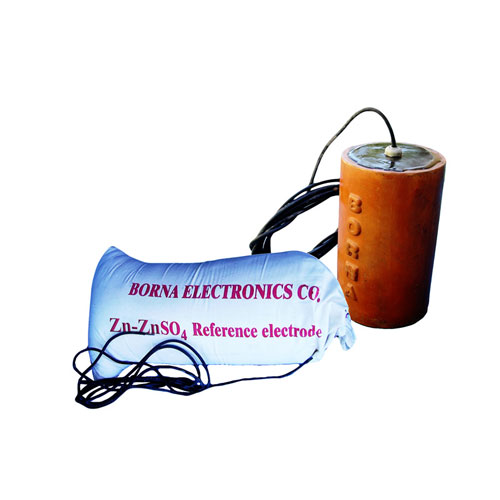
- Silver/silver chloride reference electrode
Bernagdaz silver/silver chloride reference electrode consists of a silver electrode whose surface is coated with silver chloride by thermal or electrolytic methods. This electrode shows a high degree of stability. The silver/silver chloride reference electrode is used directly in seawater or brackish river water. In other applications, such as steel in concrete, a silver/silver chloride/potassium chloride reference electrode is used.
The electrodes used in sea water are placed in chambers for mechanical protection, and holes are created on these chambers to establish contact with the electrolyte. These electrodes should be immersed in sea water for several hours before use. The ends of the electrode cable are well insulated to prevent short circuit.
Silver/silver chloride reference electrodes should be kept in saturated potassium chloride solution when not in use.
- Zinc reference electrode
It may not seem logical to use a metal reference electrode with the purpose of measuring the potential difference, in direct contact with the electrolyte surrounding the structure, but the zinc reference electrode in seawater is suitable for many applications. This reference electrode is cheaper than the silver/silver chloride reference electrode and should be used instead unless a high degree of stability is required.
In the production of zinc reference electrodes, high purity zinc ingots (minimum 99.9% with a maximum iron content of 0.0014%) are used. For connection, a copper cable with a coating resistant to chlorine ions and with a cross section of 10 mm2 or 216 mm is used and this cable is welded to the steel core inside the electrode. The junction of copper cable and steel rod is covered with epoxy resin.

The accuracy of potential measurement using silver/silver chloride reference electrode in sea water is about ±5 mV and using zinc reference electrode in sea water is about ±30 mV.
Technical documents of reference electrodes of Bernagdas (portable and fixed Hafcells):
Sample datasheet of fixed reference electrode of copper / copper sulfate Bornagodaz
Sample data sheet of portable copper/copper sulfate reference electrode Bornagodaz
A sample datasheet of a fixed reference electrode zinc / zinc sulphate Bornagodaz
A sample data sheet of reference zinc electrode (portable) Bornagodaz
Sample data sheet of portable reference electrode of silver / silver chloride Bornagodaz
Technical catalog of reference electrodes (fixed and portable) of Bernagdas
